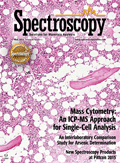Appendix V: Mid-IR
Manufacturer: Block Engineering
Product name: LaserSense
QCL Mid-IR spectrometer
For: Process applications
Measurement mode: Gas detection
Software features: May be used with other equipment
Unique features: Quantum cascade laser–based gas detection system OEM option for integrators or complete system for hydrocarbons. 5.3–12.8 µm (1880–780 cm-1) range. Configurable dynamic range and LOD options with customizable gas cell lengths. Internal reference design, fast measurement speed (10 Hz). Flexible interface and SDK for remote access of data. Includes OEM mini-QCL, pump value, pressure sensor, wireless module and antenna, power input, switch, and power converter, gas input and output flame arrester, internal filtration, gas cell heater.
Suggested applications: Hydrocarbon detection: mudlogging (C1–C5) and upstream–downstream; semiconductor industry: endpoint detection; process monitoring; environmental monitoring; laboratory analysis; industrial monitoring.
Manufacturer: Block Engineering
Product name: LaserWarn
Open-path chemical detection system
Measurement mode: Open-path infrared absorption spectroscopy
Software features: May be used with other equipment.
Unique features: An open-path chemical detection system based on patented quantum cascade laser technology (5.4–13 µm). Fixed site configuration or on-the-fly configuration. Increased sensitivity, aiming accuracy, and distance compared to conventional infrared systems. Detects chemical threats, leaks, and fugitive emissions (TICs, CWAs) over a coverage area of thousands of square feet, and can be in used in indoor and outdoor applications. Eye-safe laser beams allow for operation in areas with people; no consumables; sub-second detection times.
Suggested applications: Safety and security from chemical threats: detection of CWAs and TIC–TIMs in and around transportation hubs, embassies, stadiums, and other vulnerable sites; industrial leak detection: indoor–outdoor perimeter monitoring and leak detection of fugitive emissions and other target gases.
Manufacturer: Bruker Optik GmbH
Product name: LUMOS
FT-IR microscope
For: Laboratory analysis
Weight: 50 kg
Dimensions: 300 x 640 x 520 mm
Measurement mode: Transmission, reflection, ATR
Software name: OPUS
Software features: 21CFR11 compliant, cGMP compliant; may be used with other equipment; compatible with other manufacturers' equipment
Unique features: Motorized ATR crystal; large working distance; high level of automation; stand-alone FT-IR microscope with compact footprint.
Suggested applications: Analysis of contamination in industrial products , identification of polymer products and laminates, particle analysis, investigation of fibers.
Manufacturer: Bruker Optik GmbH
Product name: VERTEX FM
Mid-IR/far-IR spectrometer
For: Laboratory analysis
Measurement mode : Transmission, reflection, ATR
Unique features: A unique FT-IR spectrometer covering the complete mid- and far-infrared and terahertz spectral ranges in one step.
New this year: Bruker now offers a new wide-range MIR-FIR DLaTGS detector as well as a mid-IR/far-IR beamsplitter. Both together form the basis of the unique VERTEX FM FIR-MIR extension for the VERTEX 70 purge and VERTEX 70v vacuum systems, which provide data collection from 6000 cm-1 down to 50 cm-1 in one step without the need to change the beamsplitter or the detector.
Suggested applications: The extension of the mid-IR toward the far-IR spectral range below 400 cm-1 is of general interest for molecular vibrational analysis; for inorganic and organometallic chemistry; for geological, pharmaceutical, and physical applications; polymorphs and crystallinity analysis; as well as for matrix isolation spectroscopy.
Manufacturer: JASCO
Product name: FTIR-4000/6000 Series
FTIR spectrometers
For: Laboratory analysis
Measurement mode: Transmission, ATR, diffuse reflectance, specular reflectance, grazing-angle reflectance, reflection absorption, photoacoustic
Software name: Spectra Manager II
Software features: 21CFR11 compliant, cGMP compliant
Unique features: New FTIR-4000/6000 Series spectrometers offer high S/N values, sensitivity, and vibration-free scanning. All instruments feature a highly stable, corner-cube interferometer and AccuTrac DSP technology for rapid and accurate tracking of mirror position and velocity for optimum signal-to-noise performance.
Suggested applications: Materials analysis, chemical analysis, pharmaceutical, biological–biochemical analyses, polymers, particulate contamination, gas-phase analysis, rotational–vibrational analysis.
Manufacturer: Prism Analytical Technologies, Inc.
Product name: MAX
Mid-IR spectrometer
For: Laboratory analysis, process applications, handheld or portable use
Weight: 115 lb
Dimensions: 17.5 x 25.5 x 17 in.
Measurement mode: GC–IR, transmission in gas cell.
Software name: MAX software package
Unique features: Combines separation of a GC system with the spectral resolving power of FT-IR and detection limits that rival single-quadrupole MS. No customer calibration is required since the FT-IR calibrations are permanent and transferable from one instrument to another. MAX does not require helium as a carrier gas or the use of turbomoleular pumps, and it has a dynamic range spanning 10 orders of magnitude (ppt to percent).
Suggested applications: Benchtop analysis instrument for most GC and GC-MS applications, on–site process gas and environmental source testing. Complete HAP test while at the source, applications where sensitive detection of a wide variety of VOCs, SVOCs and other vaporous materials are needed.

Best of the Week: AI and IoT for Pollution Monitoring, High Speed Laser MS
April 25th 2025Top articles published this week include a preview of our upcoming content series for National Space Day, a news story about air quality monitoring, and an announcement from Metrohm about their new Midwest office.
LIBS Illuminates the Hidden Health Risks of Indoor Welding and Soldering
April 23rd 2025A new dual-spectroscopy approach reveals real-time pollution threats in indoor workspaces. Chinese researchers have pioneered the use of laser-induced breakdown spectroscopy (LIBS) and aerosol mass spectrometry to uncover and monitor harmful heavy metal and dust emissions from soldering and welding in real-time. These complementary tools offer a fast, accurate means to evaluate air quality threats in industrial and indoor environments—where people spend most of their time.